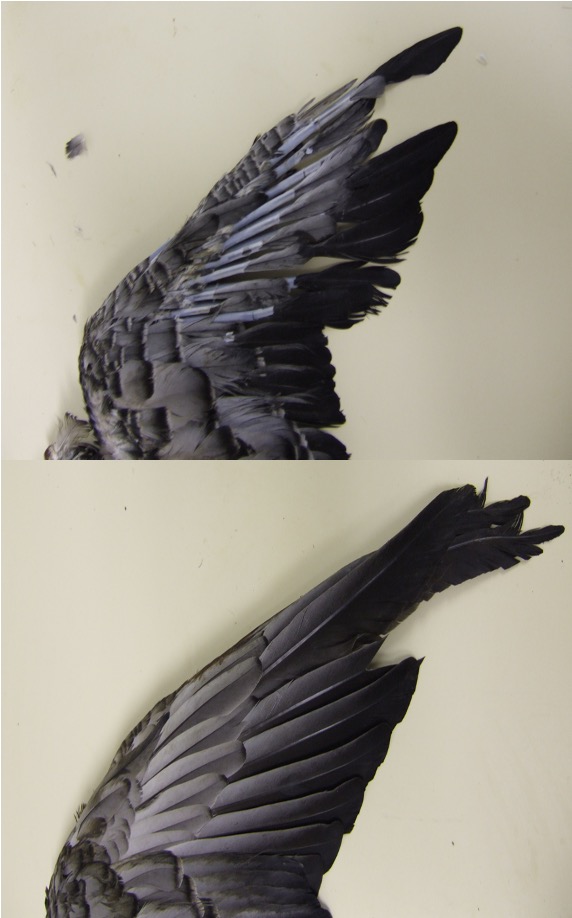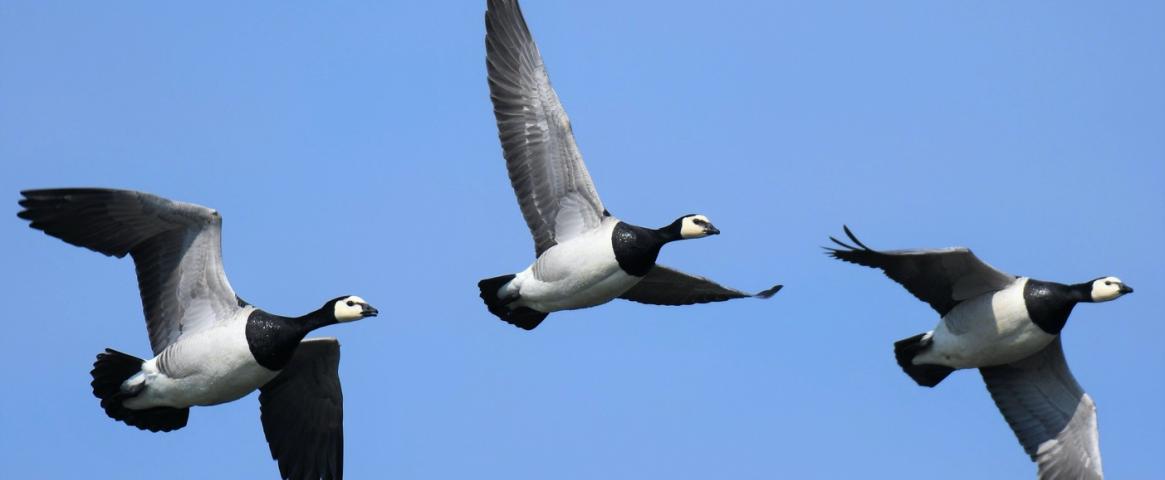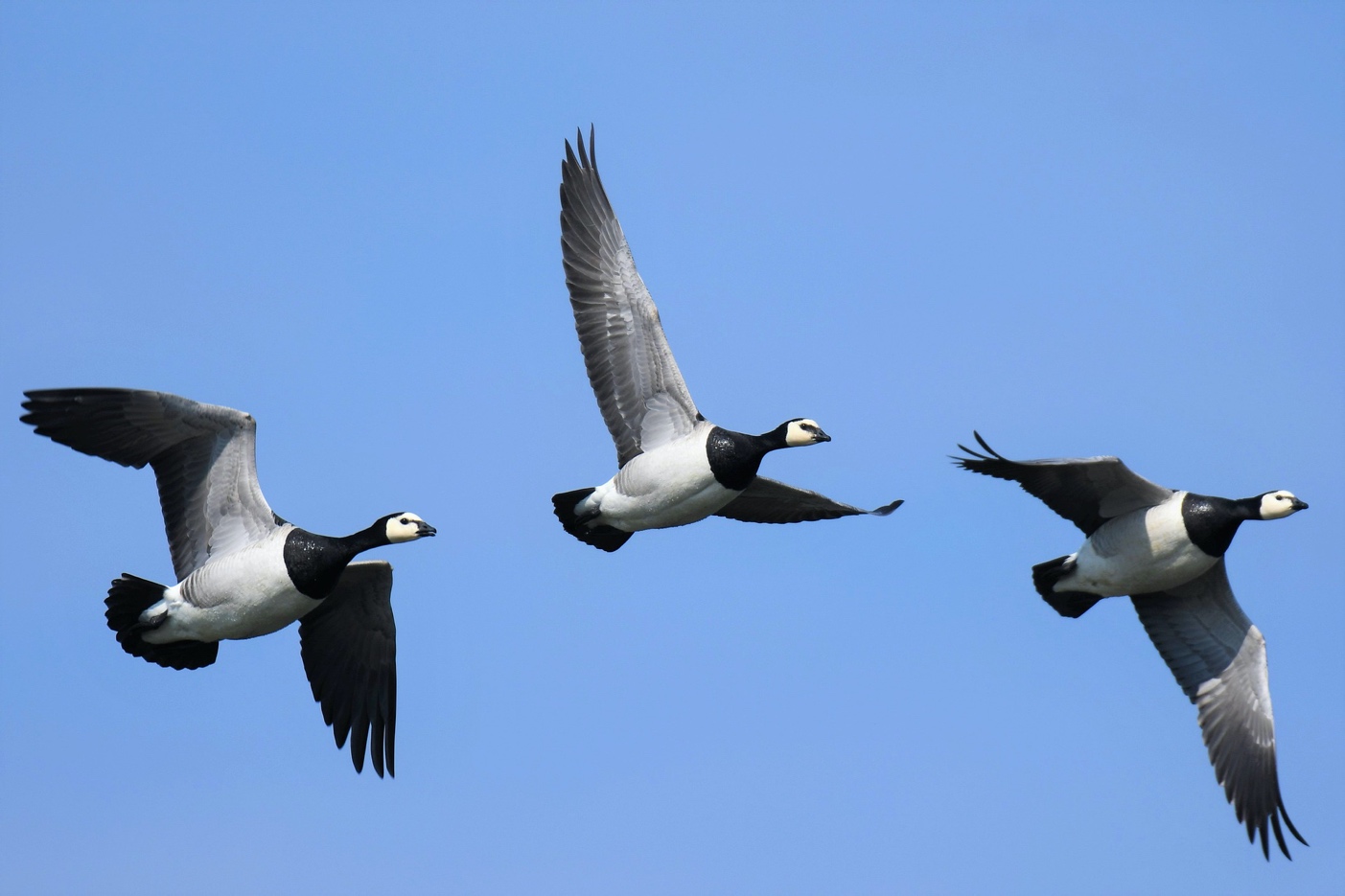By Allessandra DiCorato
Captive geese may produce poorer quality, less stiff feathers than their wild counterparts, a new preliminary study released on the pre-peer-review publication site BioRxiv shows.
Feathers are key to a bird’s survival. Substandard ones make flight more difficult, and feather damage reduces the chance that a wild bird will breed or survive the winter, because of insufficient insulation.

The findings raise questions about the effects of captivity — even through well-intentioned efforts — on wild birds, and the role of factors such as stress and diet. This could inform conservation and rehabilitation efforts that take wild birds in after adverse events such as an oil spill, fishing net entanglement, cat attack, or fall from a nest.
Though feathers are light and may appear delicate, they must be stiff and strong to withstand the aerodynamic forces of flight. Feathers cannot repair themselves, so birds routinely switch out old ones for new. For geese, that regeneration process, or molting, happens to all the feathers at once, and only once a year.
“If something goes wrong with that feather, you are stuck with it for the whole year,” said lead author Steve Portugal, an ecophysiologist at Royal Holloway, University of London.
Understanding feather growth is especially important in birds like geese, because while molting, they are vulnerable. Flightless, limited to the diet in the habitat where they find themselves, and stressed by outside, often human, forces, they grow feathers that reflect their environment. Changes during that period can have far-reaching implications.
Portugal and his team compared molted feathers from barnacle geese born and raised in captivity in outdoor cages, with those from wild geese who had returned to Svalbard, Norway after a 5,000-kilometer migration to southwest Scotland.
Portugal and his colleagues predicted that because the captive geese had not migrated, they would have stiffer, more robust feathers than the wild birds who had been exposed to the wear of a long flight, UV exposure and bacterial damage.
Their results showed the opposite: Even after migration, the quill, or lower part of the feather, was 14% stiffer than that of captive birds, and the central shaft that runs the length of the feather was 17% stiffer.
These surprising findings might raise more questions than they answer. The team did not test feathers from wild geese before migration, so they have not yet demonstrated how flight affects the feathers. Previous studies have shown that new feathers are generally of better quality than worn pre-molt feathers, however, suggesting the wild birds’ feathers would be stiffer before migration than after.
Additionally, the researchers tested feathers from birds born into captivity, but not from captive birds that began life in the wild, so it is unclear how long the changes in feather quality take to appear.
Still, the study suggests that captivity is linked to lower feather quality. Follow up studies could further illuminate possible unintended costs of rehabilitation activities on wild birds. If conservationists take an injured seabird into captivity, for example, they would not want to release the bird with weaker feathers, leaving the animal vulnerable to predators and other agents.
But just how might captivity relate to the observed difference in feather stiffness?
Portugal and colleagues suggest that stress or diet in captive geese could be the link.
Both explanations are “eminently reasonable,” said Michael Romero, a professor of biology at Tufts University who studies stress among wild animals.
Although he does not study large water birds, Romero has found that wild house sparrows taken into captivity never adapted to their environment. The birds had elevated levels of the stress hormone corticosterone for weeks.
But Romero did not observe an impact of corticosterone on feather stiffness in the species he studies, so he surmises that the effect in captive barnacle geese is more likely tied to diet than to stress.
Whatever the cause, the changes illustrate that humans may not fully grasp the impact of their actions on wild animals. Ultimately, the most significant influence on a feather may be not wind or rain or UV exposure, but the conditions under which it grew.
Allessandra DiCorato is a PhD candidate at Northwestern University, where she studies how nanomaterials interact with soft biological tissue in contexts ranging from sea urchins to cancer cells. Allessandra was a 2019 AAAS Mass Media Fellow at KQED Science, where she spent the summer writing about a range of topics, including a neurotoxin released by algal blooms, the proposal to delist gray wolves from the Endangered Species Act, and a rare genetic heart condition. She graduated from Cornell University in 2015, where she studied chemistry, creative writing and biomedical engineering. Follow her on Twitter @aedicorato or email her at aedicorato@gmail.com.
This story was produced as part of NASW's David Perlman Summer Mentoring Program, which was launched in 2020 by our Education Committee. DiCorato was mentored by Czerne Reid.





